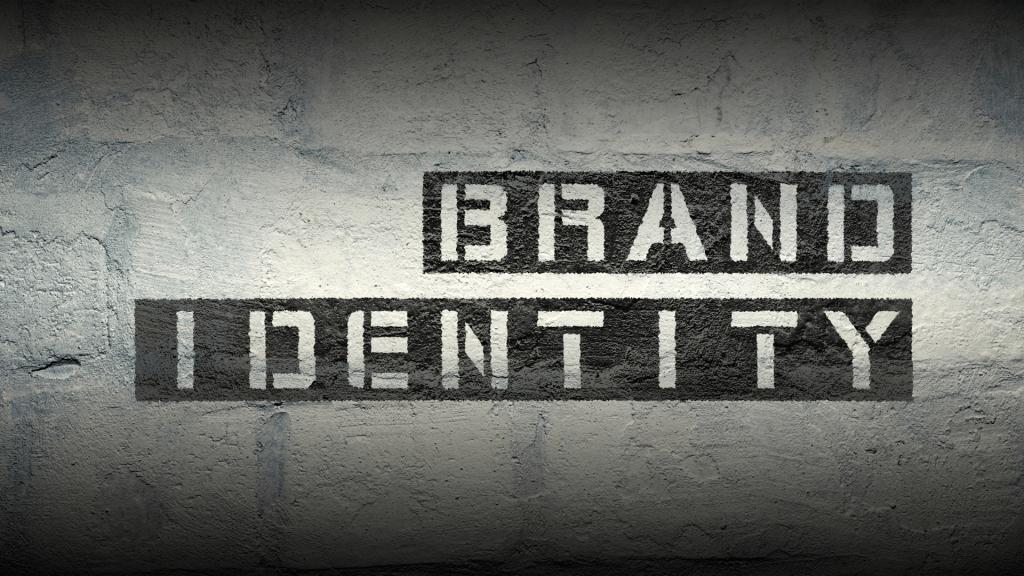Table of Contents
- Advanced Strategies for Crafting a Distinctive Brand Identity
- Practical Tips and Real-world Examples for UK Businesses
- Leverage Local Partnerships
- Utilise British Heritage and Culture
- Engage with the Community
- Consider Brexit Implications
- Integrate Customer Feedback
- Consult Experts
- More Case Studies:
- Jaguar and The Body Shop
- Dyson: Innovating Brand Identity
- John Lewis: Trust and Customer Service
- Greggs: Evolving with Market Demands
- Brompton Bicycle: Niche Targeting
- Burberry: Balancing Heritage and Modernity
- Final Thoughts
In today’s competitive market, building a robust brand identity has never been more critical for UK businesses. A well-defined brand not only distinguishes you from competitors but also fosters customer loyalty and drives growth. But what does it mean to have a ‘strong brand identity,’ and how can businesses in the UK develop one? This article offers actionable insights and best practices tailored for UK businesses.
What is Brand Identity?
Brand identity is the collection of all elements that a company creates to project the right image to its consumer. It serves as the face of your business and encompasses everything from your logo and typography to your website and advertising materials. More than just visual aspects, brand identity also encapsulates your company’s mission, values, and the overall experience you offer to your customers.
Why is Brand Identity Crucial?
Building a cohesive and strong brand identity is crucial for several reasons:
- Recognition: Consumers are more likely to choose a brand that they recognize over something unfamiliar.
- Consistency: A unified brand identity across all platforms creates a cohesive experience, making it easier for customers to understand what you offer.
- Loyalty: A well-defined brand can create strong customer loyalty, leading to repeat business and referrals.
- Competitive Advantage: A strong brand helps you stand out in crowded marketplaces, especially when consumers are faced with numerous choices.
Key Components of Brand Identity
The first step towards developing a strong brand identity is to understand its key components. Here they are:
| Component | Description |
|---|---|
| Logo | The visual cornerstone of your brand, a well-designed logo sets the stage for all other brand elements. |
| Colour Scheme | Colours evoke emotions. Choose a colour scheme that aligns with your brand’s core message and target audience. |
| Typography | The fonts you choose should complement your logo and other visual elements, adding cohesiveness to your brand. |
| Voice and Tone | Whether your brand is formal or casual, your voice and tone must consistently reflect your brand’s personality. |
This foundational knowledge sets the stage for the more advanced strategies discussed in the following sections, aiming to help you refine and solidify your brand identity.
Advanced Strategies for Crafting a Distinctive Brand Identity
Conduct Market Research
Understanding your target audience is pivotal for any brand. Effective market research identifies the needs, preferences, and pain points of potential customers. Surveys, focus groups, and one-on-one interviews are some ways to gather data, allowing you to tailor your brand identity to meet consumer expectations.
Develop a Brand Story and Positioning Statement
A compelling brand story provides the context for your brand identity. What problem is your brand solving? What makes it unique? Your positioning statement should concisely convey the essence of your brand story, serving as an internal guidepost for all branding activities.
Align Your Brand With Core Values
Authenticity is key in today’s market. Make sure your brand identity is a genuine reflection of your business values. This helps to build trust and rapport with your audience.
Implement a Brand Style Guide
An often-overlooked yet vital step in establishing a strong brand identity is creating a brand style guide. This document outlines the specifics of your brand’s visual elements—such as logo usage, colour codes, and typography—ensuring consistency across all marketing platforms.
Involve Employees in Branding Efforts
Employees are ambassadors for your brand. Training programs, workshops, and employee advocacy can go a long way in ensuring that they understand and correctly represent your brand identity.
Utilise Storytelling Techniques
Effective storytelling goes beyond merely narrating a sequence of events. It involves framing these events in a way that emotionally resonates with your target audience. Whether it’s through blog posts, video content, or social media, storytelling can be a powerful tool to reinforce your brand identity.
Choosing the Right Platforms
The platforms where you choose to communicate your brand have a significant impact on its perception. For instance, a tech start-up might focus on professional networks like LinkedIn, while a clothing retailer might target younger audiences on Instagram. Choose platforms that align with your target audience’s preferences.
Measure and Adapt
Establishing a brand identity isn’t a set-it-and-forget-it endeavour. It’s essential to continuously measure its effectiveness through metrics like customer engagement, brand recall, and conversion rates. Tools like Google Analytics can offer invaluable insights for this purpose.
Case Study: Unilever
Unilever, a multinational consumer goods company, offers an excellent example of strong brand identity. With its ‘Sustainable Living’ brand ethos, it not only aligns its products with a greater social good but also stands out in the crowded FMCG sector.
With these advanced strategies and actionable steps, UK businesses can begin to carve out a distinctive and resonant brand identity in a competitive market landscape.
Practical Tips and Real-world Examples for UK Businesses
Leverage Local Partnerships
Forging partnerships with other local businesses can help elevate your brand. Joint promotions or events not only broaden your reach but also associate your brand with other respected local entities. Consider collaborations that offer synergies and co-branding opportunities.
Utilise British Heritage and Culture
If appropriate for your brand, integrating elements of British heritage or culture can make your identity more relatable and attractive to a UK audience. Brands like Barbour and Burberry have successfully done this, capitalising on their British roots to create a compelling brand story.
Engage with the Community
Whether it’s sponsoring local sports teams or participating in community events, active engagement at a grassroots level can significantly boost your brand’s credibility and local identity. It shows that you’re more than just a business; you’re a part of the community.
Consider Brexit Implications
Given the changing trade landscape post-Brexit, your brand identity might need to incorporate new elements that reassure both UK and international customers. Whether it’s local sourcing or transparent business practices, make sure your brand adapts to the new market realities.
Integrate Customer Feedback
Pay attention to what your customers are saying. Customer feedback, especially when solicited through direct surveys or social media, can offer insights into what’s working and what needs improvement. This is invaluable for refining your brand identity.
Consult Experts
Brand development isn’t something to be taken lightly. Consulting with branding agencies or experts can provide external perspectives that are invaluable in refining your brand identity. They bring in experience from multiple sectors and can pinpoint areas for development that you may have overlooked.
More Case Studies:
Jaguar and The Body Shop
Automaker Jaguar leverages its British heritage and history of innovation to project a brand that is both luxurious and technologically advanced. On the other hand, The Body Shop capitalises on its British origins and ethical sourcing practices to appeal to socially-conscious consumers.
Dyson: Innovating Brand Identity
Dyson offers a prime example of a brand that has innovatively built its identity around technological advancement and superior design. The company’s commitment to innovation is not just evident in its products but also its marketing. They invest in high-quality advertising and interactive customer experiences to convey their brand’s core value of ‘efficiency through innovation.’
John Lewis: Trust and Customer Service
John Lewis has anchored its brand identity around customer service and trust. With its famous “Never Knowingly Undersold” promise, the company has managed to build a reputation for quality and reliability. Their focus on creating a seamless online and in-store experience demonstrates an understanding of changing customer behaviours and expectations.
Greggs: Evolving with Market Demands
The bakery chain Greggs showcases how adapting to market trends can strengthen brand identity. Initially known for traditional bakery items like pasties and sausage rolls, Greggs successfully expanded its menu to include healthier options, appealing to a broader audience and demonstrating agility in brand positioning.
Brompton Bicycle: Niche Targeting
Brompton Bicycle has carved out a unique space for itself in the crowded cycling market with its foldable bikes. The company has focused its brand identity around mobility, flexibility, and British craftsmanship. Their active community engagement, through cycling events and collaborations, further enhances their brand’s distinctiveness.
Burberry: Balancing Heritage and Modernity
As a luxury fashion brand with deep British roots, Burberry strikes a fine balance between its rich heritage and modern fashion trends. Their use of British cultural icons in advertising, along with innovation in digital marketing, allows them to maintain a classic yet contemporary brand identity.
These case studies underscore the multifaceted approaches UK businesses have taken to establish strong brand identities. They illustrate that understanding your market, being adaptable, and staying true to core values are critical factors in building a brand that not only stands out but also stands the test of time.
Final Thoughts
Building a strong brand identity is an ongoing process that evolves with market conditions and consumer expectations. The tips and strategies outlined in this article offer a comprehensive guide for UK businesses aiming to establish or strengthen their brand identity. With careful planning, consistent execution, and periodic evaluation, your brand can achieve the kind of recognition and loyalty that are the hallmarks of business success.











